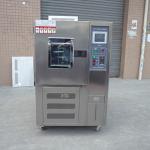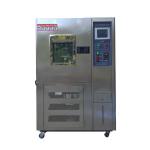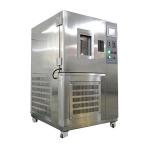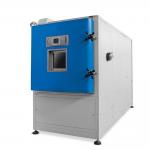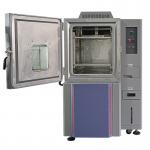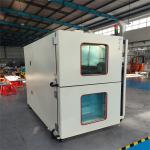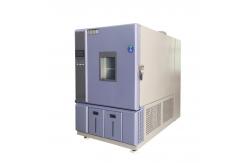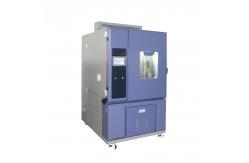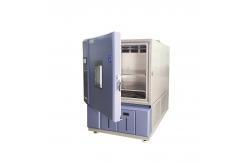In the aerospace industry, where precision and reliability are
non-negotiable, the 1000L Rapid Temperature Change Rate Test
Chambers stand as a cornerstone of quality assurance and
technological advancement. These chambers are meticulously designed
to meet the exacting demands of testing aerospace components,
ensuring their performance and durability in the face of extreme
temperature variations. This state-of-the-art test chamber is dedicated to subjecting
aerospace components and materials to a precisely controlled
environment with rapid temperature change capabilities. It serves
aerospace manufacturers, research institutions, and regulatory
bodies. The primary objective is to evaluate the performance,
integrity, and functionality of these components under the dynamic
temperature conditions they may encounter during flight, from the
frigid cold of high-altitude cruising to the intense heat of
re-entry or engine operation. By replicating such scenarios,
manufacturers can identify potential weaknesses, optimize product
designs, and ensure compliance with the stringent industry
standards and safety regulations. - Robust and Insulated Chamber Structure
- The 1000L chamber is constructed with a heavy-duty, aerospace-grade
alloy frame and insulated walls. The alloy frame provides
exceptional strength and rigidity, ensuring the chamber can
withstand the rigors of continuous and long-term testing. The
insulation materials are carefully selected to minimize heat
transfer and maintain highly accurate temperature gradients within
the chamber. The chamber is sealed with advanced, high-temperature
and corrosion-resistant gaskets and precision sealing mechanisms to
prevent any air leakage, which could compromise the integrity of
the test environment. The door is equipped with a reliable locking
system and a large, pressure-resistant viewing window, allowing
operators to closely monitor the test process without disturbing
the internal conditions. The interior of the chamber is designed
with smooth, easy-to-clean surfaces to prevent any particulate or
contaminant buildup that could affect the test results.
- High-Speed Temperature Control System
- The heart of the chamber lies in its advanced temperature control
system. It can achieve a wide temperature range, typically from
-70°C to +120°C, with an accuracy of ±0.3°C. What sets this chamber
apart is its remarkable ability to change temperature at a rapid
rate. It can ramp up or down the temperature at a rate of up to
15°C per minute, allowing for the simulation of the most extreme
and sudden temperature shifts that aerospace components may
experience. This is made possible by a combination of
high-performance refrigeration units, powerful electric heaters,
and a sophisticated PID controller. Multiple temperature sensors
are strategically placed throughout the chamber to provide
real-time feedback, enabling the control system to make
instantaneous and highly accurate adjustments.
- Advanced Airflow and Circulation Design
- To ensure uniform temperature distribution within the large 1000L
volume, an advanced airflow and circulation design is incorporated.
The system consists of multiple high-capacity fans and a network of
ducts and baffles. The fans can generate adjustable air velocities,
typically ranging from 1 m/s to 5 m/s. The airflow is carefully
directed to eliminate any stagnant areas or temperature gradients,
ensuring that all parts of the test samples are exposed to the
exact same environmental conditions. This is crucial for obtaining
accurate and reliable test results, especially when testing large
and complex aerospace assemblies.
- Intuitive Control Panel and Data Acquisition Interface
- The equipment is equipped with an intuitive control panel that
simplifies the operation and parameter setting. Operators can
easily adjust the temperature, temperature change rate, test
duration, and other parameters using the user-friendly interface.
The control panel also provides real-time displays of the current
test conditions, as well as any alarms or warnings. The chamber is
integrated with a comprehensive data acquisition system. It records
all relevant test data, such as temperature histories, rate of
change of environmental parameters, and any observable changes in
the test samples. The data can be stored in a built-in memory or
exported to external storage devices for further analysis. The
system can also generate detailed test reports in various formats,
facilitating easy documentation and sharing of results.
|
